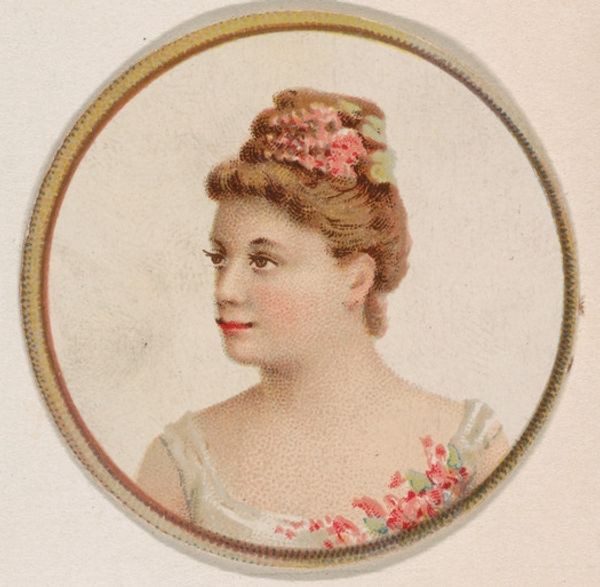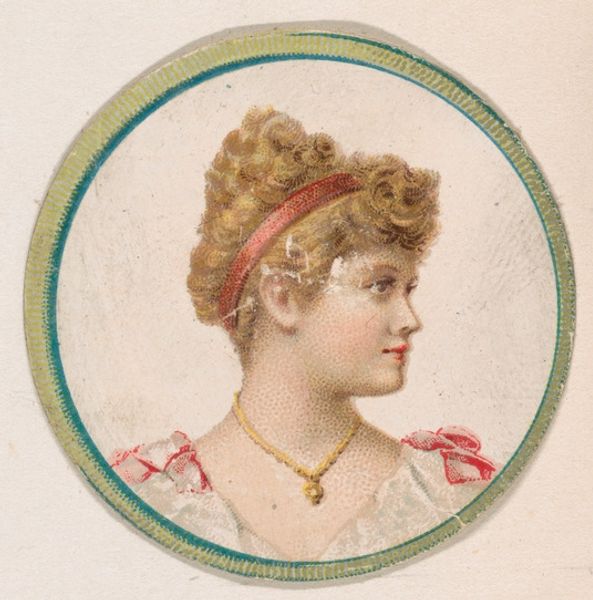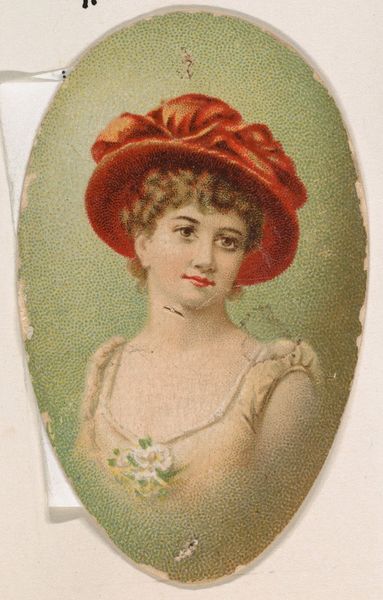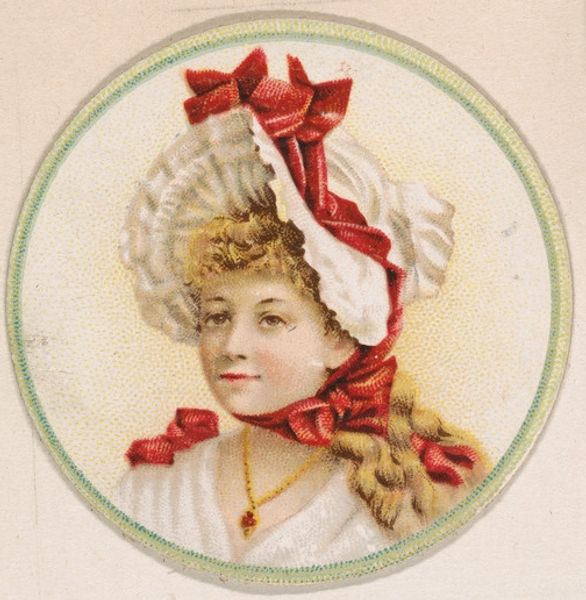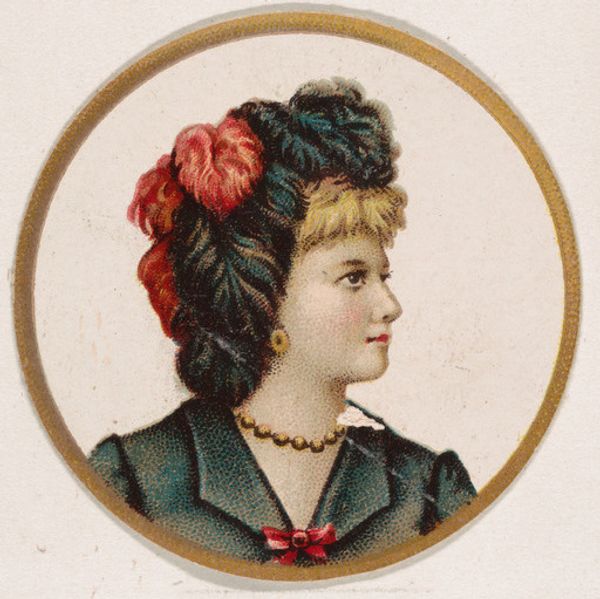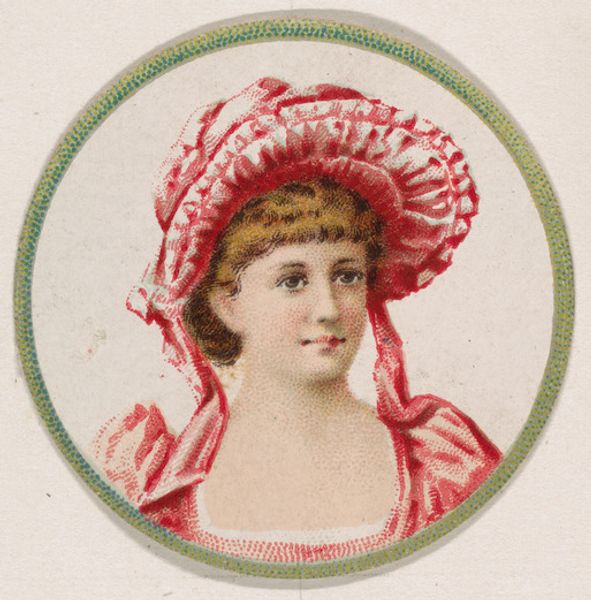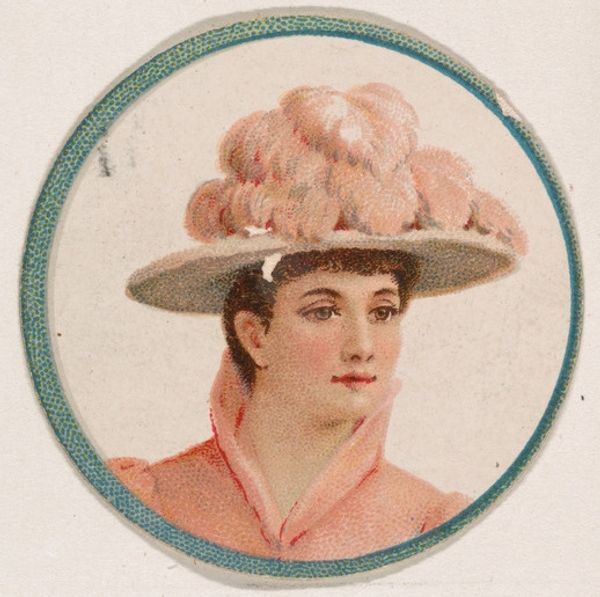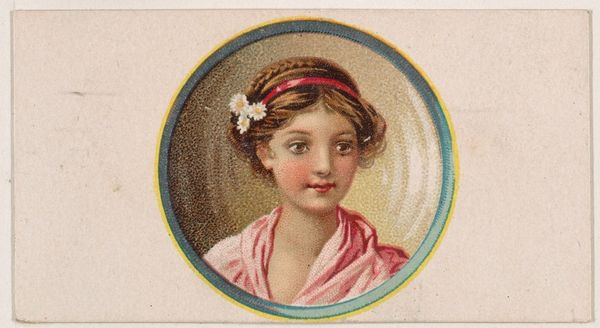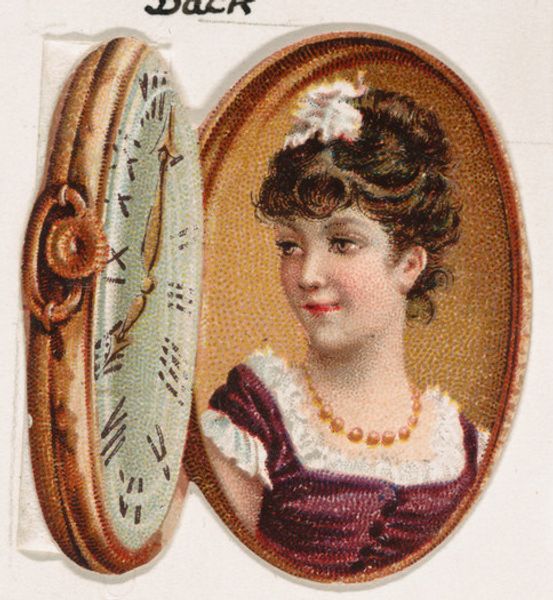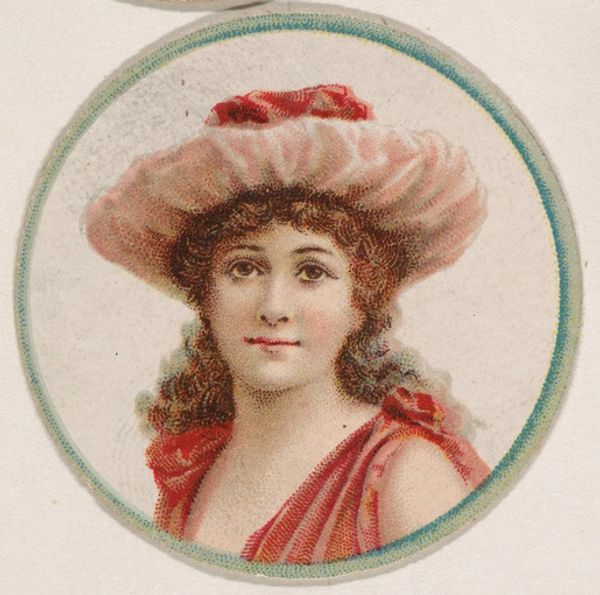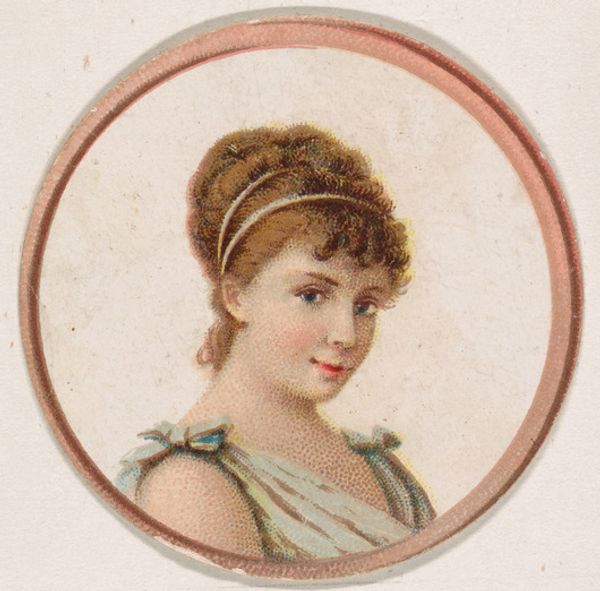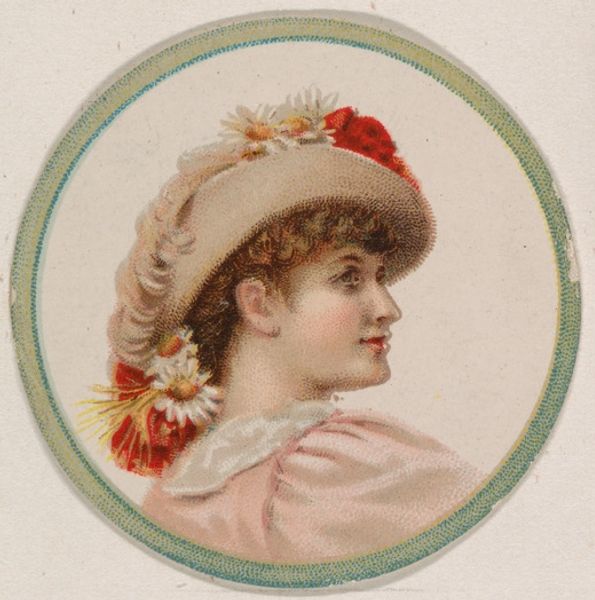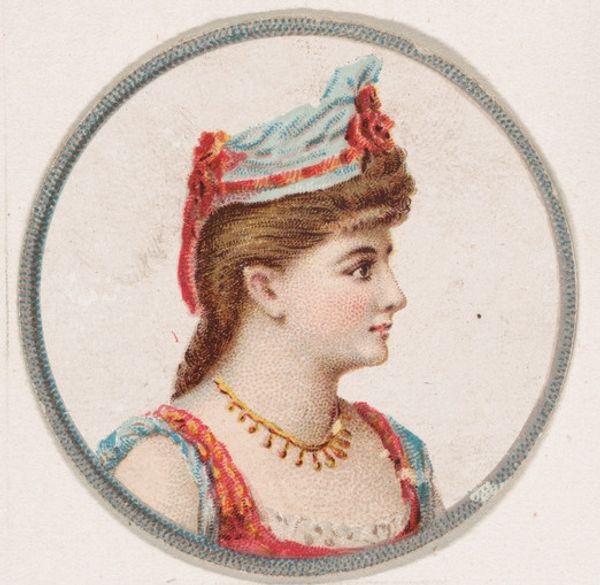
Woman wearing floral hat, from the Novelties series (N228, Type 2) issued by Kinney Bros. 1889
0:00
0:00
drawing, print
#
portrait
#
drawing
# print
#
figuration
#
portrait reference
#
profile
Dimensions: Sheet (Round): 1 9/16 × 1 9/16 in. (4 × 4 cm)
Copyright: Public Domain
Curator: Here we have a charming little print: "Woman wearing floral hat" from the Novelties series by Kinney Brothers Tobacco Company, dating to 1889. Editor: My first thought is, “dainty.” The whole thing—the circular frame, the profile view—it feels like a carefully preserved antique cameo. Curator: These were actually trade cards, small advertisements included with tobacco products. The goal was to entice customers through collecting and trading. We need to situate it in the context of gender roles and the construction of femininity in the late 19th century. It's an idealised image of feminine beauty that catered to a very specific patriarchal view. Editor: That raises an interesting point. Let's examine the printing process, then. These cards would have been mass-produced. Understanding the mechanization of printing at the time—the materials, labor, and distribution involved—that impacts how we see the individual portrayed. The portrait becomes a commodity, a tool of commerce as much as representation. Curator: Precisely. The "Novelties" series as a whole speaks to the objectification of women—beautiful objects intended to drive consumption. Look at the details, like the profusion of roses atop the hat; the way the bow accentuates the neck... it's all deliberate. There's a subtle performance of gender at play. What stories do these details subtly convey and actively omit, even? Editor: Right, and those red tones would have been a specific choice, drawing the eye amidst the general beige. Perhaps red dyes were newer and thus, visually, attention-grabbing. Or possibly they were linked, unconsciously, to a certain level of conspicuous expenditure? After all, dyeing was not always economical... Curator: Exactly. We can ask, how does this small printed image connect to wider socio-economic forces? Whose stories does it conceal while advancing others? Who possessed leisure and opportunity? Editor: Considering the materiality, how does something so ephemeral and commercially-driven gain entry into an art collection? And what happens to its meaning once its initial purpose is forgotten? Curator: Ultimately, its preservation and display give us an opportunity to question traditional notions of beauty, consumerism, and the power structures they often mask. Editor: Precisely. We're challenged to appreciate its delicate craftsmanship even as we deconstruct its underlying agenda. A reminder that seemingly innocent images can carry weighty cultural significance.
Comments
No comments
Be the first to comment and join the conversation on the ultimate creative platform.

